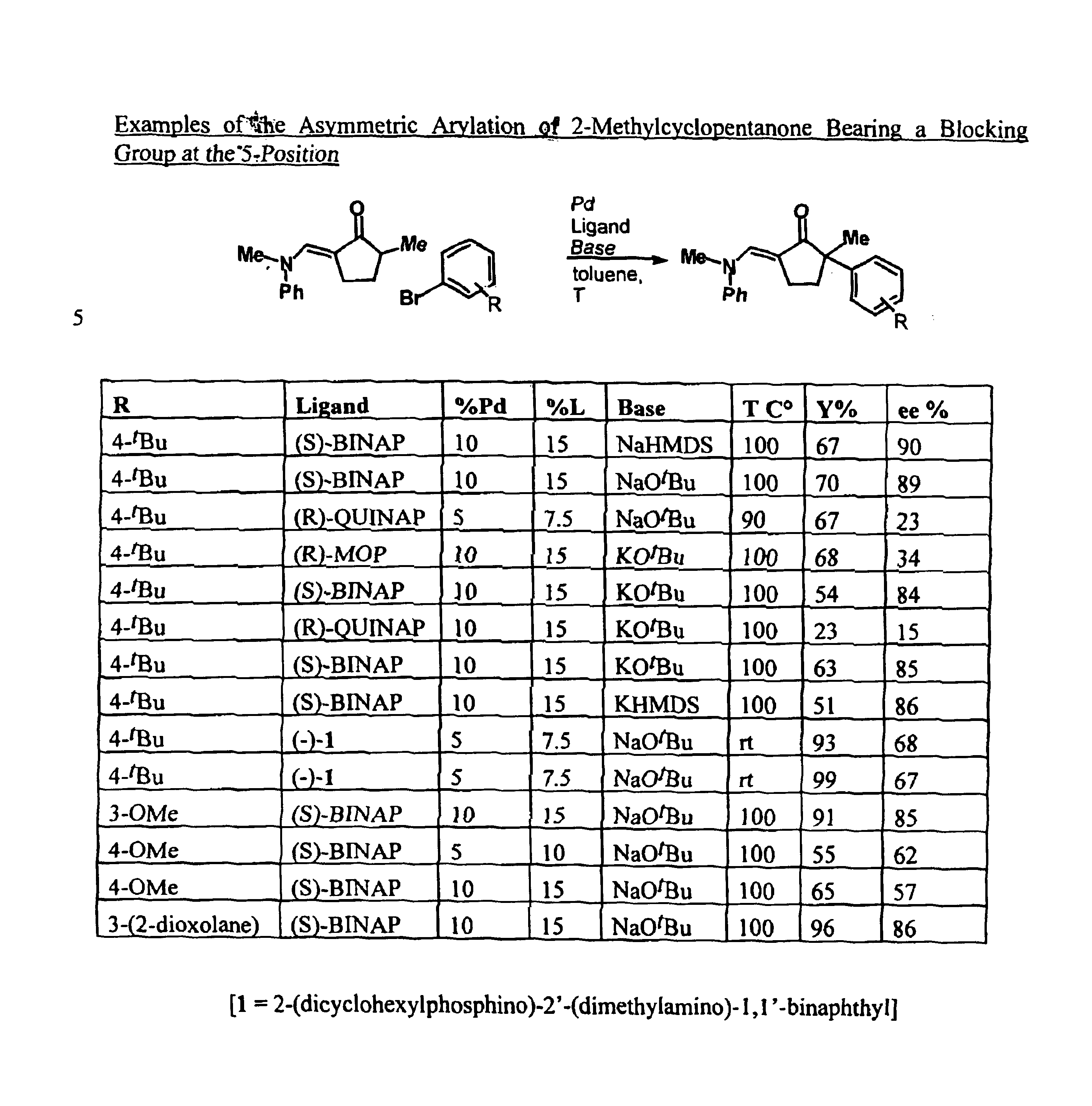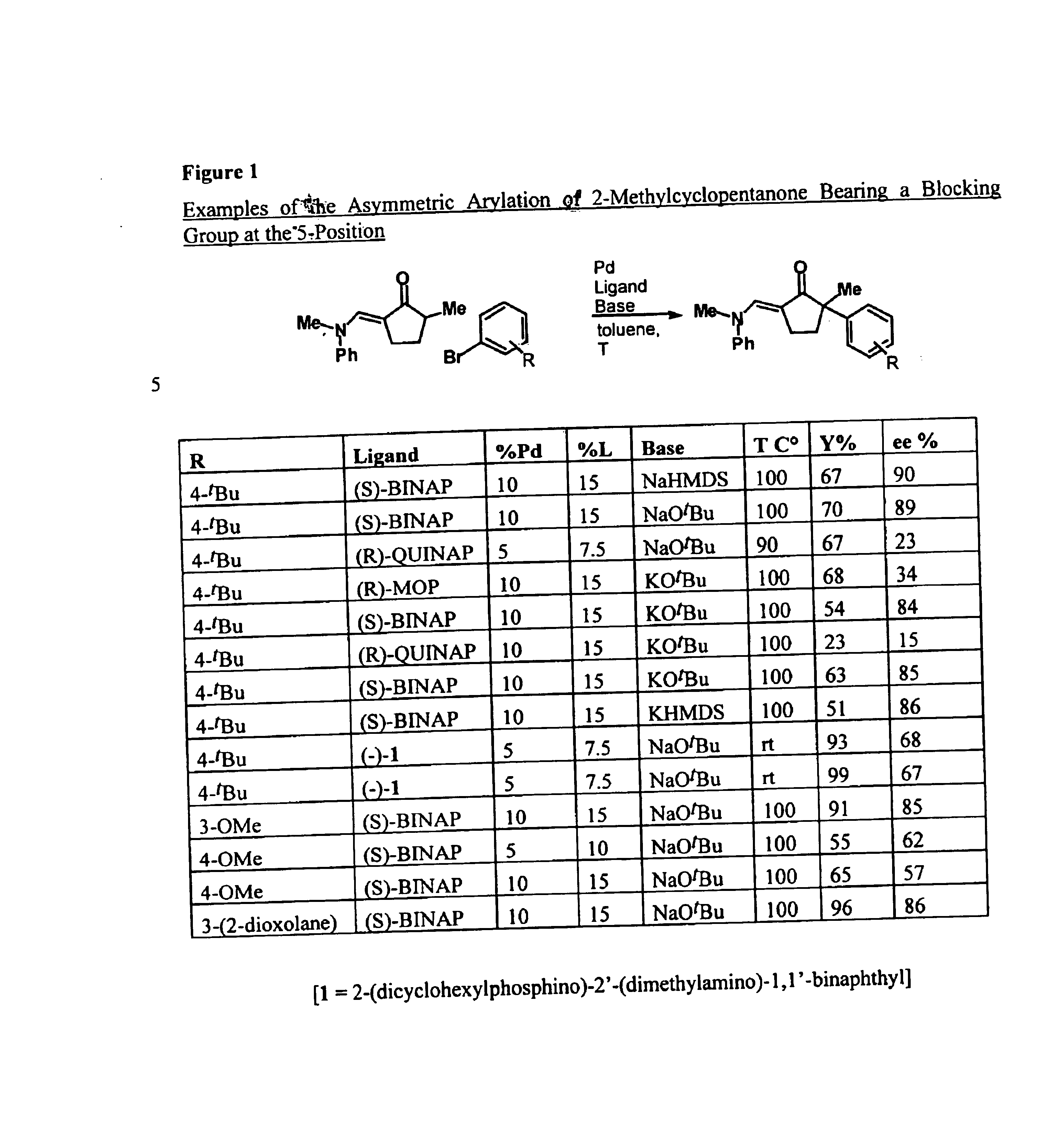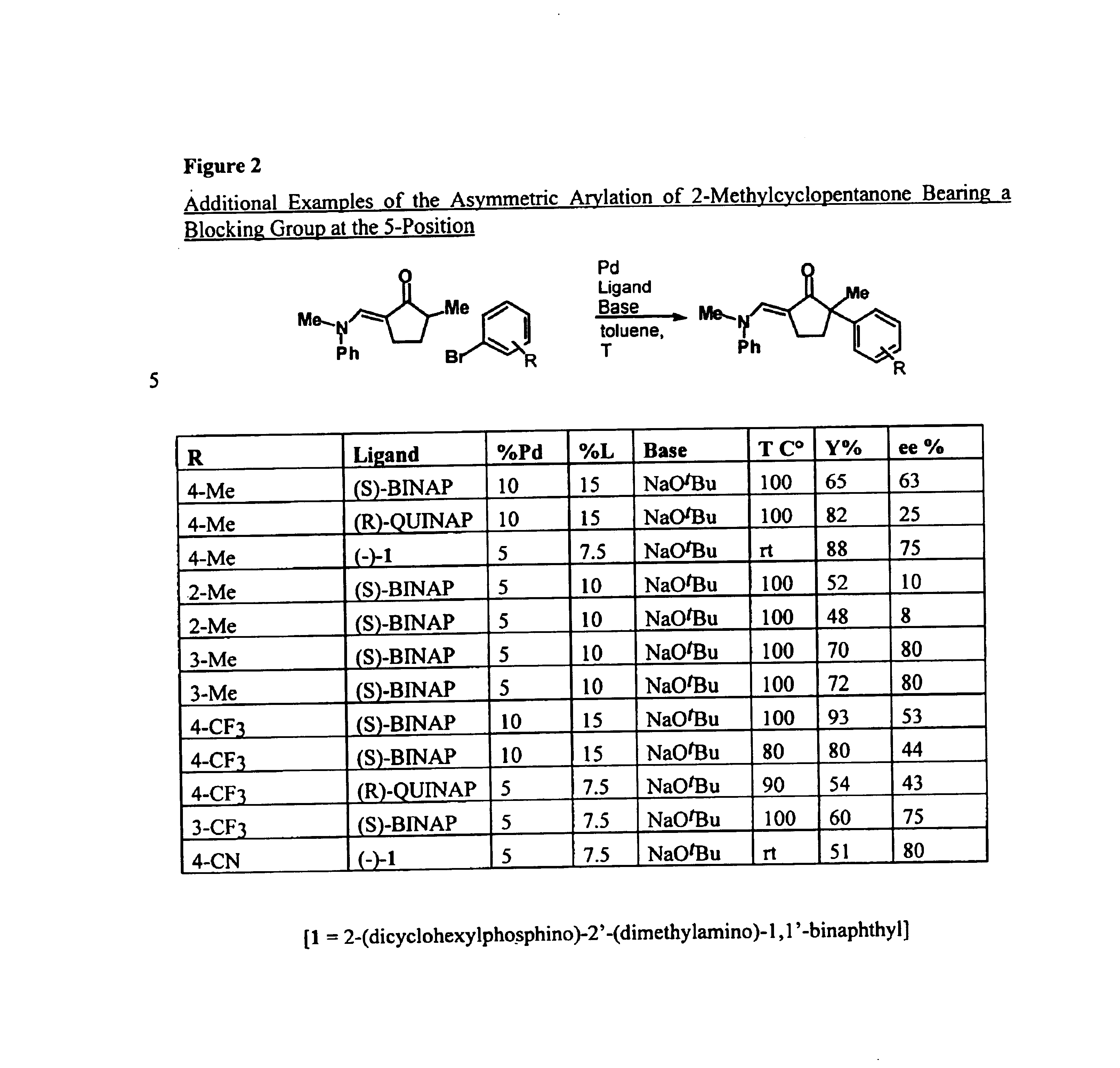Arylation and vinylation of activated carbons
a technology of activated carbons and vinyls, which is applied in the field of arylation and vinylation of activated carbons, can solve the problems of limited scope, in fact, and limited application, and achieve the effects of reducing the cost of arylation
- Summary
- Abstract
- Description
- Claims
- Application Information
AI Technical Summary
Benefits of technology
Problems solved by technology
Method used
Image
Examples
example 1
REFERENCES AND NOTES FOR EXAMPLE 1
1. Abramovitch, R. A.; Barton, D. H. R.; Finet, J.-P. Tetrahedron 1988, 44, 3039-3071.2. (a) Morgan, J.; Pinhey, J. T.; Rowe, B. A. J. Chem. Soc. Perkin Trans. I 1993, 1677-1681. (b) Ryan, J. H.; Stang, P. J. Tetrahedron Lett. 1997, 38, 5061-5064. (c) Barton, D. H. R.; Finet, J.-P., Giannoti, C.; Halley, F. J. Chem. Soc., Perkin Trans. I 1987, 1005-1007. (d) Mino, T.; Matsuda, T.; Maruhashi, K.; Yamashita, M. Organometallics 1987, 16, 3241-3242. (e) Dell'erba, C.; Novi. M.; Petrillo, G.; Tavani, C. Tetrahedron 1993, 49, 235-242. (f) Rathke, M. W.; Vogiazoglou, D. J. Org. Chem. 1987, 52, 3697-3698.3. Arylation of ketones via SRN1 aromatic substitution has been succussfully employed; see Norris, R. K. In Comprehensive Organic Synthesis; Trost, B. M.; Fleming, I.; Semmelhack, M. F., Ed; Pergamon Press: New York, 1991; Vol 4, Ch 2.2 and references cited therein.4. Semmelhack, M. F.; Chong. B. P.; Stauffer, R. D.; Rogerson, T. D.; Chong, A.; Jones, L., D...
example 2
Synthesis of 1-(3-benzaldehyde ethylene acetal)-3-methyl-2-butanone
An oven-dried Schlenk tube containing a stir bar was charged with Pd2(dba)3 (6.9 mg, 0.0075 mmol, 1.5 mol %), ligand (0.018 mmol, 3.6 mol %), and NaOt-Bu (65 mg, 0.65 mmol). The Schlenk tube was evacuated and back filled with argon. THF (2 mL) was added followed by aryl halide (0.5 mmol), ketone (0.6 mmol or 1.0 mmol), and additional THF (1 mL). The resulting red mixture was heated under argon at 70° C. until the starting halide had been consumed as judged by GC analysis. The Schlenk tube was cooled to room temperature, and diethyl ether (25 mL) and H2O (25 mL) were added. The aqueous layer was separated and extracted with diethyl ether (25 mL). The organic layers were combined, washed with brine (40 mL), dried over MgSO4, filtered, and concentrated. The crude product was then purified by flash chromatography on silica gel. Using 0.6 mmol of ketone and Tol-BINAP gave 90 mg (76% yield) of a colorless oil. 1H NMR (CDC...
example 3
Synthesis of 1-(3-benzaldehyde ethylene acetal)-3,3-diphenylacetone
An oven-dried Schlenk tube containing a stir bar was charged with Pd2(dba)3 (6.9 mg, 0.0075 mmol, 1.5 mol %), ligand (0.018 mmol, 3.6 mol %), and NaOt-Bu (65 mg, 0.65 mmol). The Schlenk tube was evacuated and back filled with argon. THF (2 mL) was added followed by aryl halide (0.5 mmol), ketone (0.6 mmol or 1.0 mmol), and additional THF (1 mL). The resulting red mixture was heated under argon at 70° C. until the starting halide had been consumed as judged by GC analysis. The Schlenk tube was cooled to room temperature, and diethyl ether (25 mL) and H2O (25 mL) were added. The aqueous layer was separated and extracted with diethyl ether (25 mL). The organic layers were combined, washed with brine (40 in L), dried over MgSO4, filtered, and concentrated. The crude product was then purified by flash chromatography on silica gel. Using 0.6 mmol of ketone and Tol-BINAP gave 139 mg, (77% yield) of a yellow solid. mp 99.1-...
PUM
| Property | Measurement | Unit |
|---|---|---|
| Temperature | aaaaa | aaaaa |
| Temperature | aaaaa | aaaaa |
| Temperature | aaaaa | aaaaa |
Abstract
Description
Claims
Application Information
 Login to View More
Login to View More - R&D
- Intellectual Property
- Life Sciences
- Materials
- Tech Scout
- Unparalleled Data Quality
- Higher Quality Content
- 60% Fewer Hallucinations
Browse by: Latest US Patents, China's latest patents, Technical Efficacy Thesaurus, Application Domain, Technology Topic, Popular Technical Reports.
© 2025 PatSnap. All rights reserved.Legal|Privacy policy|Modern Slavery Act Transparency Statement|Sitemap|About US| Contact US: help@patsnap.com



